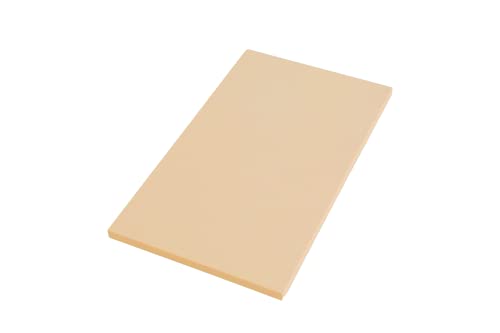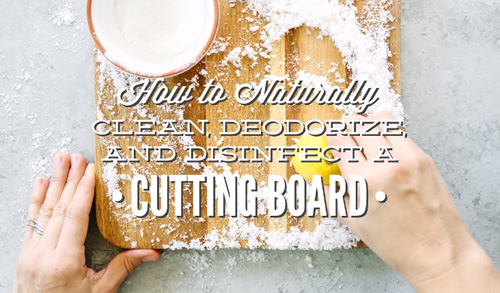Is Oak Good For Cutting Boards to Use?
When it comes to the heart of any kitchen, a well-crafted cutting board stands out as an essential tool for culinary enthusiasts and professional chefs alike. With an array of wood types available, each boasting its unique characteristics, it can be challenging to discern the ideal material for this indispensable kitchen staple. Among the plethora of choices, oak emerges as a strong contender, renowned for its durability, captivating aesthetics, and practicality.
In this blog, we delve into the question, “Is oak good for cutting boards?” and uncover the reasons why this timeless hardwood has earned its place as a favored choice for culinary artisans. From its innate strength to its resistance to moisture, we explore the exceptional qualities that make oak an exceptional companion in the culinary journey.
So, let’s embark on this delightful exploration of the perfect blend of beauty and functionality that oak cutting boards bring to our kitchens.
Is Oak Good For Cutting Boards to Use?
Yes, oak is a suitable wood for making cutting boards and is often used for this purpose. Oak is a hardwood known for its durability, strength, and attractive grain patterns, which make it a popular choice for a variety of woodworking projects, including cutting boards.
Here are some of the reasons why oak is a good option for cutting boards:
- Hardness: Oak is a dense and hard wood, which means it can withstand the impact of cutting and chopping without easily getting scratched or dented.
- Durability: Due to its hardness, oak has good longevity and can handle regular use in the kitchen without wearing down quickly.
- Aesthetics: Oak has a beautiful grain pattern that many people find appealing. It can add an elegant touch to your kitchen and can be used for both functional and decorative purposes.
- Resistance to Moisture: Oak has a moderate level of natural resistance to moisture, which is beneficial in a kitchen environment where cutting boards can be exposed to water and food juices.
- Availability: Oak is relatively common and widely available in many regions, making it a convenient choice for woodworking projects.
However, keep in mind that oak, like any other wood, can develop small cracks or splits over time with regular use. To maintain its quality and appearance, it’s important to take proper care of the cutting board. Regularly oiling the board with food-grade mineral oil or a specially formulated cutting board oil can help keep it in good condition and prevent it from drying out or absorbing excessive moisture.
Also, make sure to avoid soaking the board in water or running it through a dishwasher, as prolonged exposure to water can damage the wood. Instead, hand wash the cutting board with mild soap and warm water, and promptly dry it with a towel to prevent warping or cracking.
In summary, oak can be an excellent choice for a cutting board due to its hardness, durability, and appealing grain pattern. With proper care, an oak cutting board can serve you well in your kitchen for years to come.
The Properties of Oak Wood:
Strength and Durability:
Oak wood is known for its exceptional strength and durability. It is a hardwood that can withstand heavy use and resist the wear and tear that comes with slicing and chopping. This durability ensures that oak cutting boards remain sturdy and reliable, even after years of regular use.
Resistance to Moisture and Rot:
Another significant advantage of oak wood is its resistance to moisture and rot. This natural resistance makes oak cutting boards less prone to warping and cracking, providing a stable surface for food preparation. The resistance to rot also ensures that your cutting board remains safe and hygienic.
Aesthetic Appeal:
Oak’s natural grain patterns and warm hues add a touch of elegance to any kitchen. Its visual appeal makes oak cutting boards not only functional but also a beautiful addition to your culinary space.
Sustainability and Availability:
Oak is a sustainable wood choice for cutting boards because it is widely available and relatively fast-growing. This makes it an environmentally friendly option for those conscious of their ecological footprint.
Advantages of Oak Cutting Boards:
Excellent Durability for Heavy Use:
Oak’s robustness makes it ideal for heavy use in busy kitchens or professional settings. It can handle the demands of chopping, dicing, and slicing without showing signs of wear quickly.
Natural Antimicrobial Properties:
Studies have shown that certain types of wood, including oak, possess natural antimicrobial properties. This means that bacteria are less likely to thrive on the surface of oak cutting boards, adding an extra layer of food safety.
Gentle on Knife Blades:
Oak is a hardwood that strikes the right balance between toughness and softness. While it is hard enough to resist deep knife marks, it is also soft enough to be gentle on the sharpness of your knife blades.
Enhances Kitchen Decor:
As mentioned earlier, oak cutting boards are aesthetically pleasing, and they can enhance the overall decor of your kitchen. Their rich colors and beautiful grain patterns make them a decorative item when not in use.
Different Types of Oak Cutting Boards:
End Grain Oak Cutting Boards:
End grain cutting boards are made by arranging the wood pieces so that the end grain faces upward. This construction style results in a highly durable and knife-friendly cutting surface, making it a popular choice for serious cooks.
Edge Grain Oak Cutting Boards:
Edge grain cutting boards are constructed with the long edges of the wood pieces facing upward. These boards strike a balance between durability and price, making them a practical option for many home cooks.
Face Grain Oak Cutting Boards:
Face grain cutting boards are made with the flat surface of the wood pieces facing upward. While these boards may be more affordable, they are not as durable as end grain or edge grain boards.
Caring for an Oak Cutting Board:
Cleaning and Maintenance:
To ensure the longevity of your oak cutting board, it is essential to clean it properly after each use. Wash it with mild soap and warm water, then dry it thoroughly.
Regular Oil Application:
To keep the oak cutting board well-hydrated and protected from moisture, regular oil application is necessary. Mineral oil or food-grade cutting board oil can be used for this purpose.
Avoiding Excessive Moisture Exposure:
While oak is resistant to moisture, excessive exposure to water should be avoided to prevent any potential damage or warping.
Comparing Oak with Other Wood Types for Cutting Boards:
Maple vs. Oak Cutting Boards:
Maple and oak are both popular choices for cutting boards. Maple is a bit harder and less porous than oak, but oak still offers excellent durability and a unique aesthetic appeal.
Walnut vs. Oak Cutting Boards:
Walnut is a darker wood with a rich color, while oak has a warmer hue. Both woods are durable and perform well as cutting boards, so the choice may come down to personal preference.
Bamboo vs. Oak Cutting Boards:
Bamboo is a popular eco-friendly alternative to oak and other hardwoods. It is lightweight and sustainable, but it may not be as durable as oak in the long run.
The Best Cutting Board for Your Needs:
Cooking Style and Frequency:
Consider your cooking style and how often you use cutting boards. If you cook frequently and need a durable and reliable surface, oak may be an excellent choice.
Budget Considerations:
Oak cutting boards come in a range of prices, so it’s essential to consider your budget and find the best option that fits within it.
Design Preferences:
Oak’s natural beauty can complement various kitchen designs. Choose a cutting board that matches your kitchen decor and personal taste.
DIY Oak Cutting Board:
Choosing the Right Oak Wood:
If you’re interested in crafting your oak cutting board, choose high-quality oak wood from a reputable supplier.
Design and Dimensions:
Decide on the design and dimensions of your cutting board before starting the DIY project.
Step-by-Step Guide to Making an Oak Cutting Board:
- Gather the necessary tools and materials.
- Cut the oak wood to the desired size and shape.
- Sand the wood to a smooth finish.
- Apply a food-safe finish to protect the wood.
- Let the cutting board cure before using it.
Frequently Asked Questions (FAQs):
Is oak a safe wood for cutting boards?
Yes, oak is considered a safe wood for cutting boards, especially when properly maintained.
How do I know if my oak cutting board is properly sealed?
You can perform a simple water bead test. If water beads up on the surface, the board is properly sealed.
Can I use my oak cutting board for both meat and vegetables?
Yes, oak cutting boards can be used for both meat and vegetables. However, it’s essential to clean them thoroughly between uses to avoid cross-contamination.
How often should I oil my oak cutting board?
It’s recommended to oil your oak cutting board once a month or as needed to keep it well-hydrated and protected.
Can I put my oak cutting board in the dishwasher?
No, oak cutting boards should never be placed in the dishwasher, as the high heat and moisture can damage the wood.
Conclusion:
Oak is indeed an excellent choice for cutting boards due to its strength, durability, and resistance to moisture and rot. With its natural antimicrobial properties and knife-friendly surface, an oak cutting board can be a valuable addition to any kitchen. When compared to other wood types, oak holds its own, offering a unique and visually appealing option for home cooks and professional chefs alike. By properly caring for your oak cutting board and considering your specific needs, you can enjoy its benefits for many years to come.



